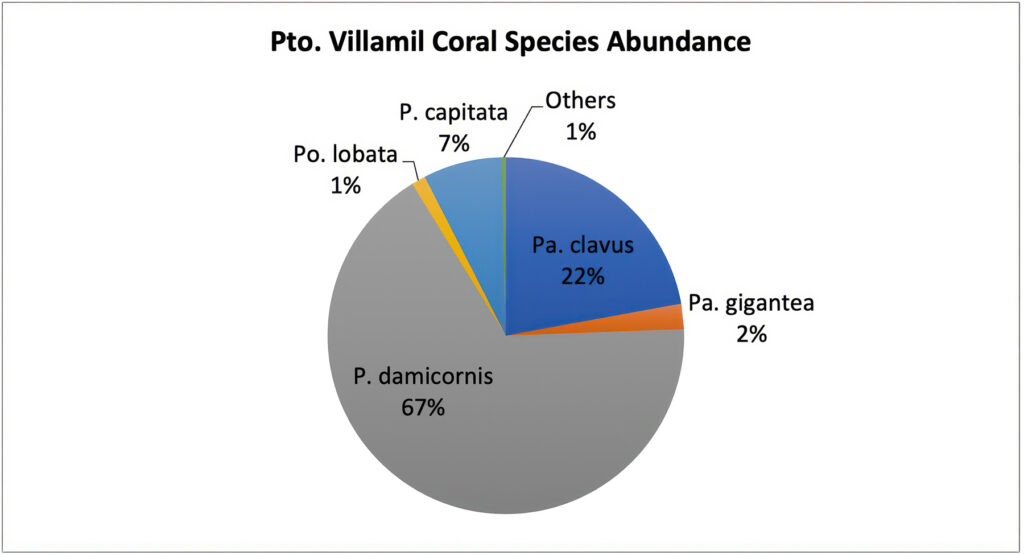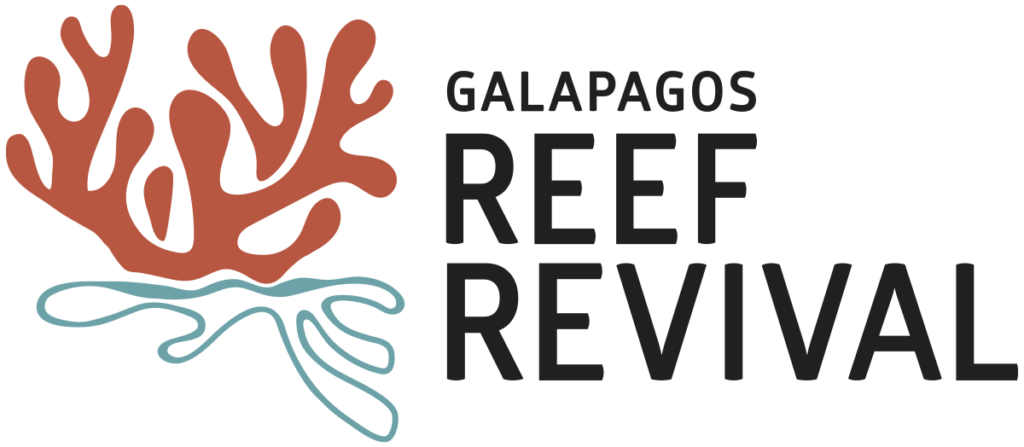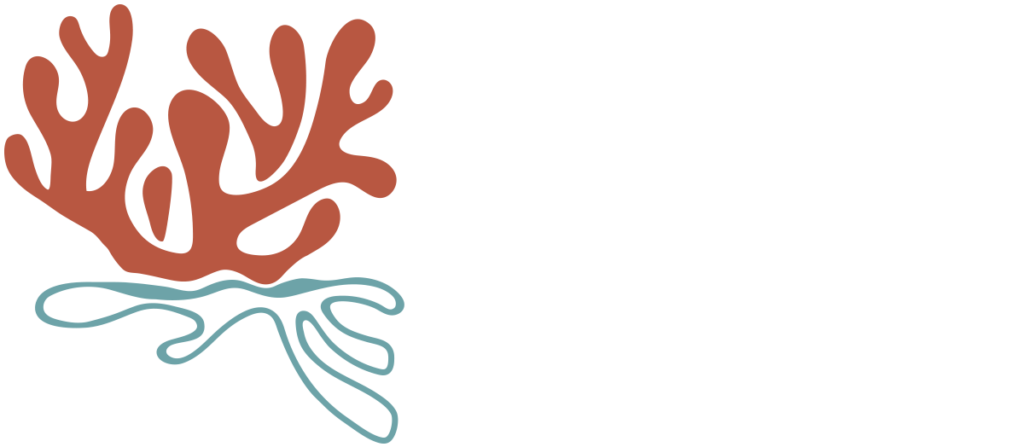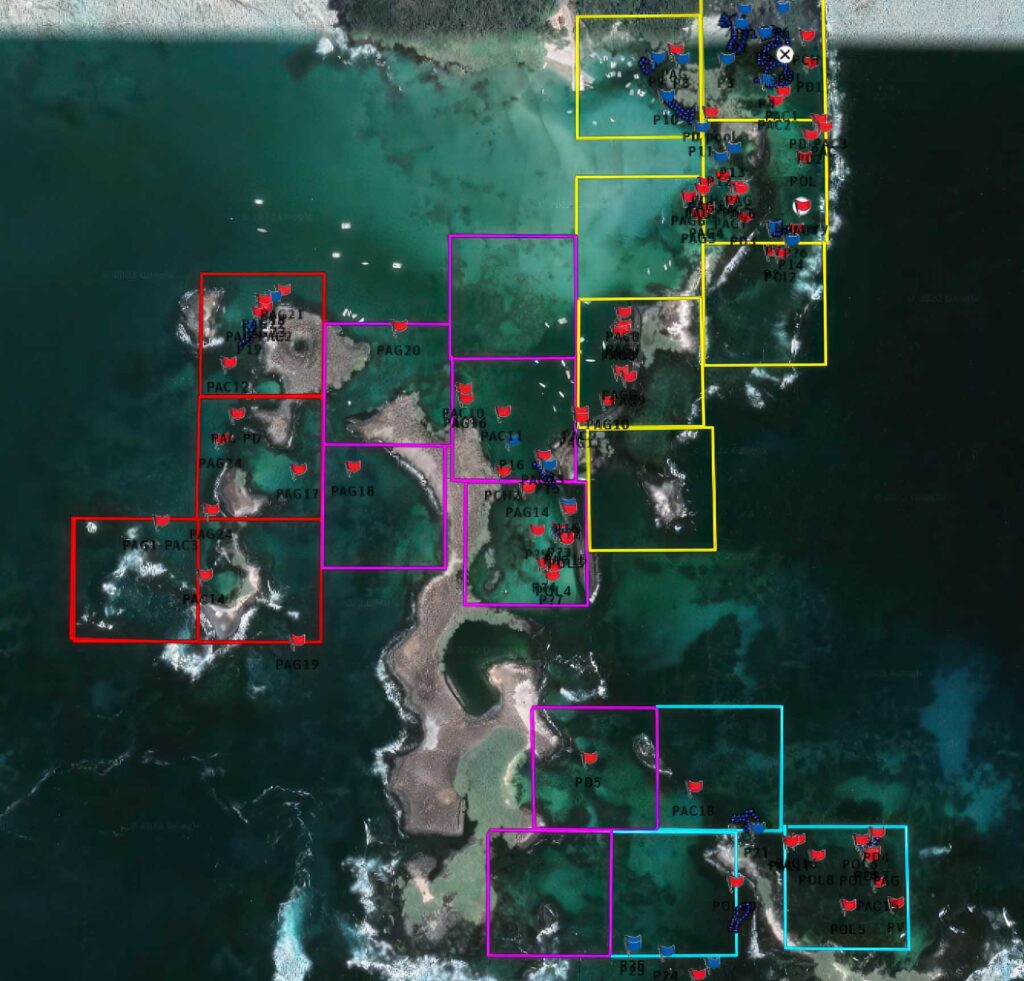Since no detailed census of coral communities in the bay area of Puerto Villamil had been undertaken to date, the obvious first step was to develop a baseline to allow for different species, genotypes and donor colony identification. Puerto Villamil bay is a diverse area, constituted by a main sheltered bay created by an array of islets and rocky outcrops.
Methods
The area was divided in 21 quadrats of 200m x 200m. Inside each quadrat coral colonies were located using a surface roving survey with snorkel equipment. Every colony encountered was measured (height x width), identified to species, georeferenced and given a score of 1-4 (depending on % surface area affected) for various health parameters (bleaching, parasites, disease or predation) as well as physical damage (fragmentation, dislodgement and sedimentation). Lowest scoring colonies were identified as potential fragment donors.
Results
Puerto Villamil Bay has an estimated population of 3,500 colonies of hermatypic corals. The depth of these colonies ranges from 0.5-7m in depth, with an average of 3 meters. Coral colonies vary in size, with an average diameter of 97 cm and an average height of 59 cm, while some colonies can reach up to 450 cm in diameter and 300 cm in height.
Puerto Villamil bay hosts eight species of corals: Pocillopora damicornis, Pocillopora capitata, Pocillopora verrucosa, Pocillopora meandrina, Pavona gigantea, Pavona clavus, Pavona chiriquiensis, and Porites lobata. Among these, the most abundant species is Pocillopora damicornis, which represents 66.5% of the sampled colonies, followed by Pavona clavus (22%), Pocillopora capitata (7%), Pavona gigantea (2%), Porites lobata (1.3%). Pavona chiriquiensis (0.34%), and Pocillopora verrucosa (0.03%) were the least aboundant.

The most widespread species were Pavona clavus and Pavona gigantea, both of which are present in all the sampled zones of Puerto Villamil. Porites lobata followed behind, being found in 4 out of the 6 sampled zones, but especially common in current-prone areas such as Lobería Chica. On the other hand, Pocillopora were observed mainly in the protected pool of Concha de Perla. A small but vibrant reef of P. capitata is found exclusively in the western end of Concha de Perla, while P. damicornis is only found in the east end of the pool. This last corresponds to a monogenotypic population composed of aproximately 1600 clonal colonies, a slowly recovering reef considered the densest patch of Pocillopora in the Galapagos. Acording to studies undertaken by Ileana Baums in 2014, this population is considered the last surviving lineage of the Pocillopora type 3a remnants in the islands after 1982 ENSO event.
damicornis is the only species significantly affected by breakage and fragmentation, experiencing moderate to severe levels of colony fragmentation and displacement. Concha de Perla is a popular snorkel and swimming location for locals and tourists alike, which may contribute to the high rates of fragmentation and coral damage. Pocillopora genus also shows one of the highest bleaching rates, with 95% of its population exhibiting mild bleaching in early November, possibly due to cold-water stress after a strong winter season. Following this, P. lobata showed 78% of its population affected by mild to moderate bleaching, possibly due to the same reasons. Tissue death due to sedimentation or disease also impacted these corals, with P. clavus being the most affected (72% of the population experiencing moderate or severe effects), followed by P. gigantea (40%). Regarding parasites, P. lobata was by far the most affected species (60% with mild effects) due to trematodiasis infectations. Predatory Fish predation impacts are minimal, with only 3 colonies showing apparent signs, all in P. lobata.
Conclusions
Coral presence in Puerto Villamil is patchy, usually composed of isolated colonies or small clonal populations, highlighting the lack of genetic diversity and new coral recruitment. This trend is prevalent on all sampled areas, which indicate their recent recovery and underscore their severe vulnerability. The presence of one of the last coral lineages in the Galapagos (Pocillopora type 3a) demonstrate the importance of these vulnerable populations as last refuges for coral diversity in the archipelago. Nevertheless, their poor state of health, impacted mostly by fragmentation and sedimentation indicate the current critical situation of the coral population, emphasizing the importance of proper management. Coral gardening promises to not only rescue these unique coral lineages, but to reproduce them, increasing coral cover and reducing extinction risk in the process.


